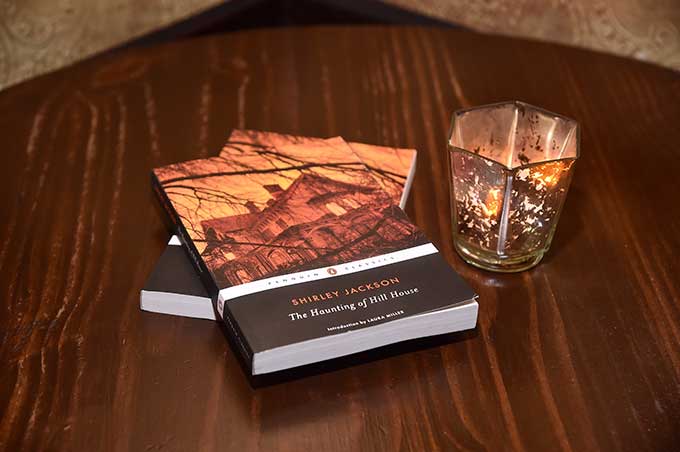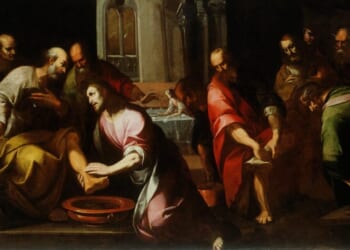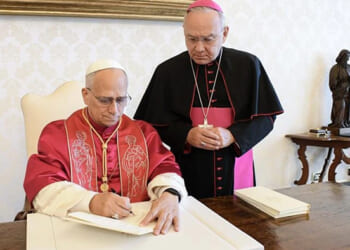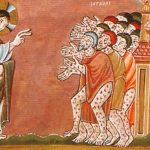In her abbreviated life (she died at 48), Shirley Jackson published six novels, two popular collections of vignettes about raising children, and possibly the most infamous short story in American literary history—“The Lottery,” which undercut the long established New Yorker brand of genteel coming-of-age narratives and garnered hate mail and subscription cancellations from its scandalized middlebrow audience. Her relatively small body of fiction, which depicts female protagonists on the verge of spiritual and psychological collapse, reveals a unique voice, a powerful if sensational imagination, and a harrowing vision of the human condition.
In the last 15 years or so, Jackson has emerged as a feminist icon after an avalanche of mass media focusing on her work, including films, a Library of America omnibus edition, a biography, a graphic novel, and the obligatory multipart Netflix adaptation. To a lamentable degree, the identity-politics corps have reduced Jackson to the role of frustrated housewife and suffering spouse. Her controlling husband, the literary critic Stanley Edgar Hyman, is prominent in every Jackson review, biographical sketch, feature, and profile.
Finally, a reason to check your email.
Sign up for our free newsletter today.
In addition, the Jackson revival includes complaints of her being discriminated against, disregarded, and unjustly forgotten (naturally because she is a woman), charges that seem overstated. By any measure, Jackson was a literary success: a popular essayist, a widely read short story writer, and a bestselling novelist. Only the grievance-obsessed would feel the need to “rehabilitate” a writer whose major works have been in print for more than 50 years, who wrote possibly the most anthologized story in the annals of American literature, and whose novels were adapted into television movies, stage plays, and films—from Lizzie in 1957 to the dreadful CGI shambles of The Haunting in 1999.
Framing her as a gender specialist is also simplistic. Jackson considered herself a serious writer (in an unmailed letter, she railed against Hyman, who wanted her to focus on commercial fiction); she did not wake up every day determined to advocate against the patriarchy the same way, say, fellow travelers in the 1930s ham-handedly chronicled the plight of the proletariat—and who, today, remembers Robert Cantwell, Edward Newhouse, or Frank Yerby?—in one dreary novel after another. That sort of didacticism may be the default setting for a generation of readers eager to reduce literature to sloganeering, but Jackson, like all real novelists, understood the obliquity of art.
Her best-known novel, The Haunting of Hill House, a unique mix of gothic terror, black humor, and psychological suspense, reflects that notion with brio.
Like many pioneer works (particularly in genre), The Haunting of Hill House seems quaint today because it established a template for American fiction. Its basic set-up—a cast of disparate characters gathering at an ill-starred house for paranormal investigations—provides the plot of dozens of films, novels, television movies, and reality shows. But Jackson infuses The Haunting of Hill House not only with a requisite number of shivers but also with a human factor missing in so much of the subsequent novels indebted to her vision.
Most supernatural novels with literary ambition imitate, to an extent, the ghost stories of Henry James, particularly The Turn of the Screw, a hair-raising novella that retains its power to disturb and confound more than 125 years after it was published. Certainly, Jackson imbued The Haunting of Hill House with the psychological depth found in James’s story and, more important, she borrowed the Jamesian concept of ambiguity regarding ghostly manifestations for her protagonist, Eleanor Vance. As with most psychological ghost stories, The Haunting of Hill House gives the attentive reader pause as to the exact nature of the strange manifestations that take place. Eleanor, the wallflower from hell, is lonely, fragile, full of repressed rage, and was once involved in a poltergeist incident, making her a possible conduit for the nightmare incidents that follow her arrival at Hill House.
In The Turn of the Screw the Governess, like Eleanor, is primed for possible psychic breakdown when she arrives at Bly Manor. But where James understates her desolate backstory, dropping subtle hints and largely avoiding direct statement, Jackson bluntly spells out just how traumatic and vulnerable Eleanor really is. Solitary, self-absorbed, self-loathing, and self-critical, Eleanor resembles someone suffering from a Group A personality disorder. Jackson introduces her to the reader with some grim particulars: “Eleanor Vance was thirty-two years old when she came to Hill House. The only person in the world she genuinely hated, now that her mother was dead, was her sister. She disliked her brother-in-law and her five-year-old niece, and had no friends.”
This thumbnail sketch only scratches the surface: Eleanor has no occupation, has never had a relationship with a man, and is sleeping on a cot in her niece’s bedroom. For eleven years she took care of her invalid mother, who was disagreeable, to say the least. This death-in-life has left Eleanor with an “inability to face strong sunlight without blinking” and vulnerable to reality beyond a sick bed.
Eleanor stumbles through life as a waking dreamer. Swiftly and skillfully, Jackson establishes her fantasy-prone personality through a series of daydreams rendered in a sing-song consciousness that underscores how much Eleanor suffers from arrested development. On her way to Hill House, Eleanor creates elaborate fairy tales about several of the houses she passes, including in her daydreams several obvious elements derived from fairy tales, such as queens, princesses, and magic spells. Every few pages, Eleanor repeats the lyrics of a ballad (adapted from Twelfth Night): “Journeys end in lovers meeting,” that reflects her sense of romantic expectations. As an out-and-out fantasist, Eleanor begins weaving Gothic-tinged reveries about Hill House before having seen it. “Perhaps Hill House has a tower, or a secret chamber, or even a passageway going off into the hills and probably used by smugglers—although what could smugglers find to smuggle around these lonely hills? Perhaps I will encounter a devilishly handsome smuggler and . . .”
Eleanor will later incorporate some of these fantasy details into her persona; for example, she lies about living alone in an apartment modeled on some of her sightseeing discoveries. This tendency to fantasize marks Eleanor as someone susceptible to distortions and flights of fancy (just as the Governess in The Turn of the Screw reads gothic fiction on her first night at Bly). Similarly, and far more important, she will eventually appropriate several aspects of the Hill House legend into a delusion that ultimately leads to tragedy.

For Eleanor, after a lifetime of dismal stasis, her trip to Hill House is her only attempt at self-determination. From the beginning, however, her odyssey is ill-fated. First, after a bitter family argument, Eleanor decides to borrow (sub rosa) the car she co-owns with her sister. On her way to the parking lot, Eleanor bumps into an old woman, knocking her lunch to the sidewalk, leading to a bizarre encounter (characteristic of Jackson) that sets the tone for the novel: the world Eleanor is about to enter is askew, absurd, awry. A pitstop at a local restaurant in rundown Hillsdale yields a rotgut cup of coffee and a pair of grotesque locals, one of whom tells Eleanor about how charming Hillsdale is, even to the locals: “They go away, the lucky ones.”
Then comes Hill House itself, dreary, bleak, monolithic, and, like so many of its Goth-lit models, an ominous structure fit for personification: “No Human eye can isolate the unhappy coincidence of line and place which suggests evil in the face of a house, and yet somehow a maniac juxtaposition, a badly turned angle, some chance meeting of roof and sky, turned Hill House into a place of despair, more frightening because the face of Hill House seemed awake, with a watchfulness from the blank windows and a touch of glee in the eyebrow of a cornice. Almost any house, caught unexpectedly or at an odd angle, can turn a deeply humorous look on a watching person; even a mischievous little chimney, or a dormer like a dimple, can catch up a beholder with a sense of fellowship; but a house arrogant and hating, never off guard, can only be evil.”
Hill House, partly modeled on the architectural disaster known as the Winchester Mansion, is an expressionistic representation of Eleanor’s tortured subconscious: “It had an unbelievably faulty design which left it chillingly wrong in all its dimensions,” writes Jackson, “so that the wall seemed always in one direction a fraction longer than the eye could endure, and in another direction of fraction less than the various possible tolerable length.”
In Hill House, Eleanor meets her three new companions: Theodora (who insists on the androgynous name Theo), a rebellious bohemian who may be a telepath; Luke Sanders, the young but amoral heir of the house; and Dr. Montague, a pompous anthropologist whose real interest is the paranormal. This trio becomes a surrogate family for Eleanor, who is desperate for human interaction and acceptance. “I want to be someplace where I belong,” she thinks.
The new surrogate family is marked by sexual aberration and the twisted interactions of dysfunctional households. Theo is a maverick, clearly queer-coded (and, thus, “unnatural” for late 1950s America); Luke is a gigolo who, out of sheer habit, will try to seduce both Eleanor and Theo; and Dr. Montague, the erstwhile authority figure, is depicted as a cuckold. (When his wife arrives at Hill House in the last third of the novel, she is accompanied by her aide de camp, Arthur, who patrols the halls at night with a pistol and whose virility contrasts with Montague’s foppish mannerisms.)
When Eleanor, Theo, Luke, and Montague gather for their first night as paranormal investigators, the legend of Hill House takes center stage. At this point, the dreaded patriarchy makes its appearance in the figure of Hugh Crain, who built Hill House and whose three dead wives symbolically represent the impossibility of family cohesion. His first wife dies when her carriage overturns on the way to Hill House, his second wife dies from an unspecified fall, and his third wife, ill with tuberculosis, dies overseas. After Crain dies, his two daughters inherit the house, leading to a bitter feud between them. Eventually, the younger daughter retains a female companion who inherits Hill House years later. In the most shocking event to take place in Hill House, the companion commits suicide.
Aside from introducing an element of mystery and drama into the plot, the gruesome past of Hill House serves two other purposes: to underscore themes of family disintegration and, most important, to function as a textual generator for Eleanor, who incorporates various elements of the legends into a tenuous reality. After Montague relates the tragic history of Hill House, Eleanor, Theo, and Luke react. As in the real world, it is suggestibility that frightens the crew at Hill House. But it does more than that to Eleanor, who immediately seizes on the suicide. “‘Killed herself?’ Eleanor, shocked into speech, half rose. ‘She had to kill herself?’”
It takes more than 100 pages for the first supernatural event to take place, giving The Haunting of Hill House a leisurely frisson before the narrative accelerates over the last half of the novel. Until then, Jackson builds tension by heightening expectation, creating dread through atmosphere, and by presenting Eleanor, Theo, and Luke as palpably spooked by their cheerless surroundings.
As the novel intensifies, various supernatural manifestations take place: an unknown entity pounds on Theo’s door (with Eleanor in the room); a message scrawled in chalk materializes on a downstairs wall (“HELP ELEANOR COME HOME”); and Theo’s room is ransacked by an unseen force, her clothes torn and splattered with blood.
And it is this unambiguous supernatural element—with a twist—that differentiates The Haunting of Hill House from The Turn of the Screw. Only the governess sees the apparitions in The Turn of the Screw, while everyone in Hill House witnesses manifestations at one point or another—everyone unlucky enough to be near Eleanor, that is. Critics are nearly unanimous in asserting that Hill House is haunted and that it has taken possession of Eleanor, whose psychic fragility makes her vulnerable to spectral assault. But another possibility, which Laura Miller touches on in her introduction to the novel’s Penguin edition, is that it is Eleanor who has triggered the events that take place throughout the novel. From the very beginning, the particulars of the hauntings are exclusively associated with Eleanor. The pounding on the doors recalls the 11 years she spent listening to her mother knock on the wall, and the message written in chalk is addressed directly to her.
Eleanor is what parapsychologists would call a “human agent,” someone who sparks poltergeist activity in his/her vicinity. As a twelve-year-old, Eleanor sparked the rain of stones on her home that occurred soon after her father died. Similarly, only three months have passed since the death of her mother, and Eleanor has found herself in a far more potent environment (Hill House) and with a far more destructive skill.
Shirley Jackson herself, in private correspondence, expressed the possibility that it is Eleanor who haunts Hill House. “Poltergeists, I now know more about than anyone,” she wrote in a letter while researching paranormal incidents. In another letter, she refers to The Haunting of Hill House as “a poltergeist story,” explicitly linking the manifestations in the novel to Eleanor, the only character involved in poltergeist activity, and who radiates the dark psychic energies of a troubled, guilt-ridden woman. The source of her guilt is her unsympathetic mother. Again and again, Eleanor mentions her mother, usually as a negative force, and, at times, seems on the verge of blurting out some terrible secret about her. Finally, out of nowhere, the dam breaks: “It was my fault my mother died. She knocked on the wall and called me and called me and I never woke up. I ought to have brought her the medicine; I always did before. But this time she called me and I never woke up. . . . I’ve wondered ever since if I did wake up.”
Not only did Jackson draw heavily from Henry James, but she also seemed inspired by the solemn ghost stories of Elizabeth Bowen, whose elegant style often masked the struggles of psychologically tormented characters. What Jackson derives from Bowen is the quiet viciousness of interpersonal dynamics gone wrong: “Speech is what characters do to each other,” Bowen once wrote. And Jackson depicts that with dramatic flair in the unpredictable relationship between Eleanor and Theo, which begins in friendship but gives way to sniping, paranormal vengeance, and seething rivalry.
Eventually Eleanor’s fantasy life transfers to Hill House itself. By then, Eleanor is having auditory hallucinations. During a walk on the grounds, “She heard clearly the brush of footsteps on the path and then, standing back hard against the bank, heard the laughter very close; ‘Eleanor, Eleanor,’ and she heard it inside and outside her head; this was a call she had been listening for all her life.” As Eleanor begins to decompensate, the narrative fractures as well. A handful of abrupt transitions signal her loss of focus, leading to the final supernatural maelstrom.
A study in poisoned and poisonous group dynamics set against a backdrop of Gothic tropes, with a singularly neurotic consciousness trying to navigate a new and menacing social world, The Haunting of Hill House chills and compels in its depiction of a traumatized woman descending into her own private inferno.
Top Photo: Glasshouse Images / The Image Bank via Getty Images
Source link


















